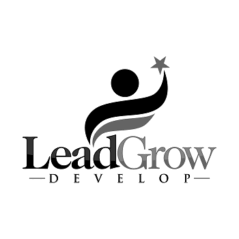The performance of every company is deeply connected to the well-being of its employees. Performance sharpens, engagement deepens, and loyalty gets stronger when people feel supported and sheltered in their workplace. Managing a firm in the modern environment calls for careful plans that prioritize your team’s health, security, and future rather than only meeting deadlines and balancing accounts. Every action you take to protect your employees reflects your leadership and the principles that determine the direction of your business.
1. Creating a Safe Physical Environment That Anticipates Risks Before They Occur
Occupational safety transcends fire drills and hard hats. It covers ergonomic setups, safe access methods, emergency readiness strategies, and training, enabling your staff to act quickly under duress. Constant assessment of your physical environment and proactive design can help to avoid mishaps and reduce the risk of hazards. Regular inspections, clear signs, and spotless paths help to lower the gradually accumulating dangers. Safety policies should be second nature to every member of your team, not only a list in a handbook. Including physical security in the framework of your company provides a basis for everything else to be more effective.
2. Offering Mental Health Resources That Address Emotional Well-Being Year-Round
Stress from home, financial anxiety, or emotional tiredness from past employment experiences—many employees bring invisible weight into the workplace. Supporting their mental health calls for constant tools that solve emotional problems long before burnout or disengagement results. Policies on open-door communication, mental wellness checks, and on-site counseling signal that emotional health is taken seriously. Encouragement of breaks, work-life balance modeling, and identification of mental tiredness all help to create a climate in which individuals feel safe being honest. Strong emotional safety nets help teams by encouraging trust, empathy, and resilience under duress; they also benefit individuals.
3. Ensuring Job Security with Clear Communication and Future-Focused Planning
Among the most disruptive elements in every company is uncertainty. Productivity and morale rapidly drop when workers lack direction or knowledge of where they stand or what’s ahead. People feel more stable and trusting when there is clear and frequent communication about roles, performance, and changes within the company. Your team will be shown by succession planning, professional development paths, and internal progression prospects that their future fits the business. Whether it’s restructuring or reacting to changes in the market, openness during trying times helps staff members avoid uncertainty and stress motivated by rumors. People behave more confidently and deliberately when they know the path ahead.
4. Prioritizing Health Benefits That Make Wellness Affordable and Accessible
Physical wellness cannot be divorced from success at the workplace. Productivity declines and mild health problems become more serious when workers encounter obstacles to basic healthcare. Giving them access to quality, reasonably priced healthcare supports your dedication to their long-term well. This is particularly crucial in discussions about health insurance for small business owners, who typically have a difficult time creating benefit packages suitable for larger competitors. Selecting options that strike a mix between affordability and thorough treatment guarantees that your team won’t have to decide between their wellness and their paycheck. Employees who have appropriate coverage are more likely to pursue preventative treatment, recover faster, and maintain a stronger focus day to day.
5. Building a Culture of Respect That Shields Against Toxic Dynamics and Discrimination
Respect is about protection, not only about manners. Establishing a culture that values justice, inclusivity, and dignity shields your staff against unfair practices, emotional damage, and workplace conflict. This calls for instruction, responsibility, and leadership provided by example that transcends a mere code of behavior. A safer emotional environment results from addressing racism, guaranteeing representation, and quickly attending to complaints. Workers must feel free to express their opinions without worrying about reprisals. A workplace based on mutual respect automatically becomes one in which individuals watch out for one another, cooperate more successfully, and participate with more pride and purpose.
Conclusion
In conclusion, protecting your staff is an ongoing commitment that changes with each obstacle and achievement rather than being a one-time event. Every aspect of your business is impacted when safety, mental health, stability, wellness, and respect are ingrained in its foundation. Your staff feels valued, not just safe. Developing a culture of protection is not only smart but also necessary in a world where the strength of your workers dictates the course of your company. And when you lead with that mindset, you will not only retain great talent but also empower it.

